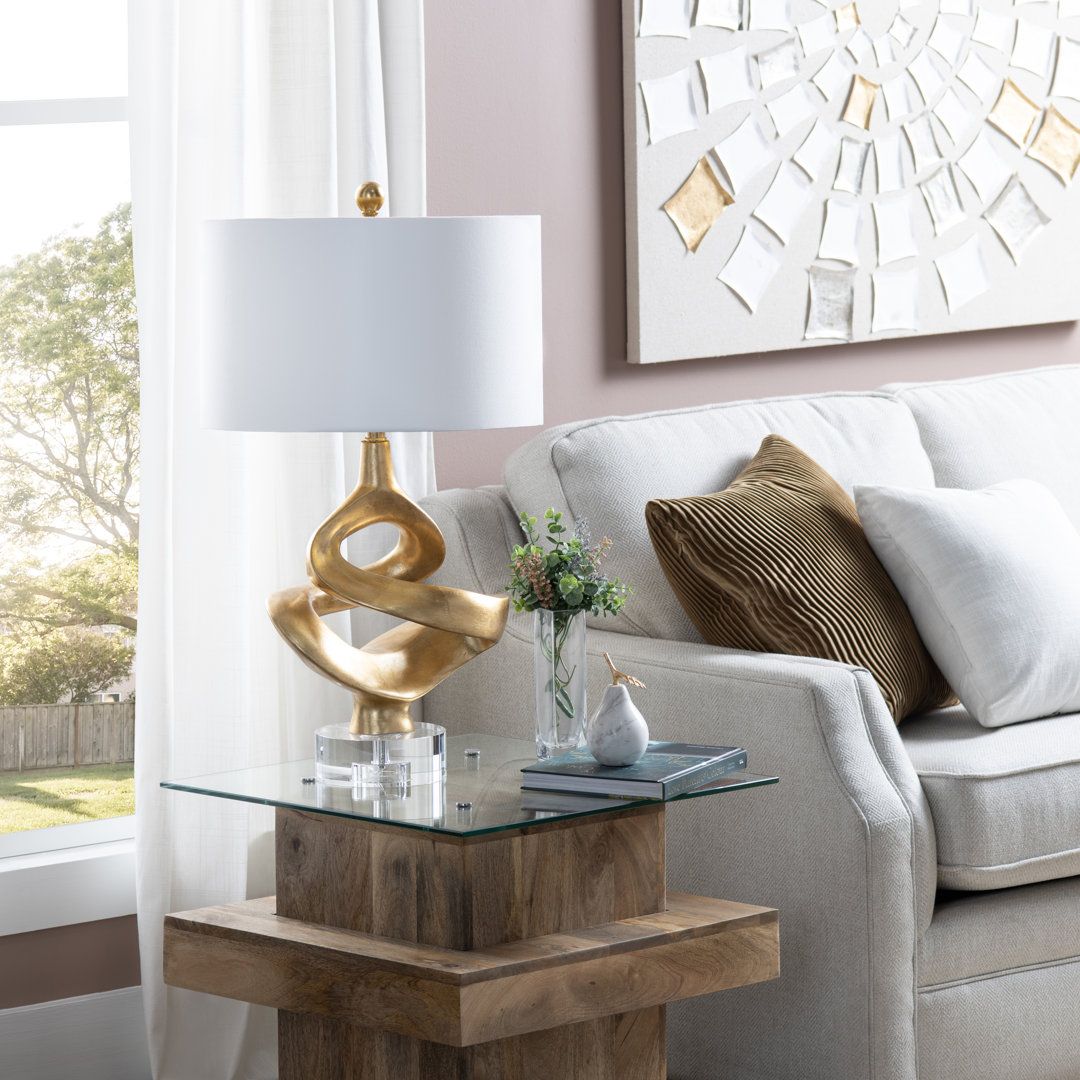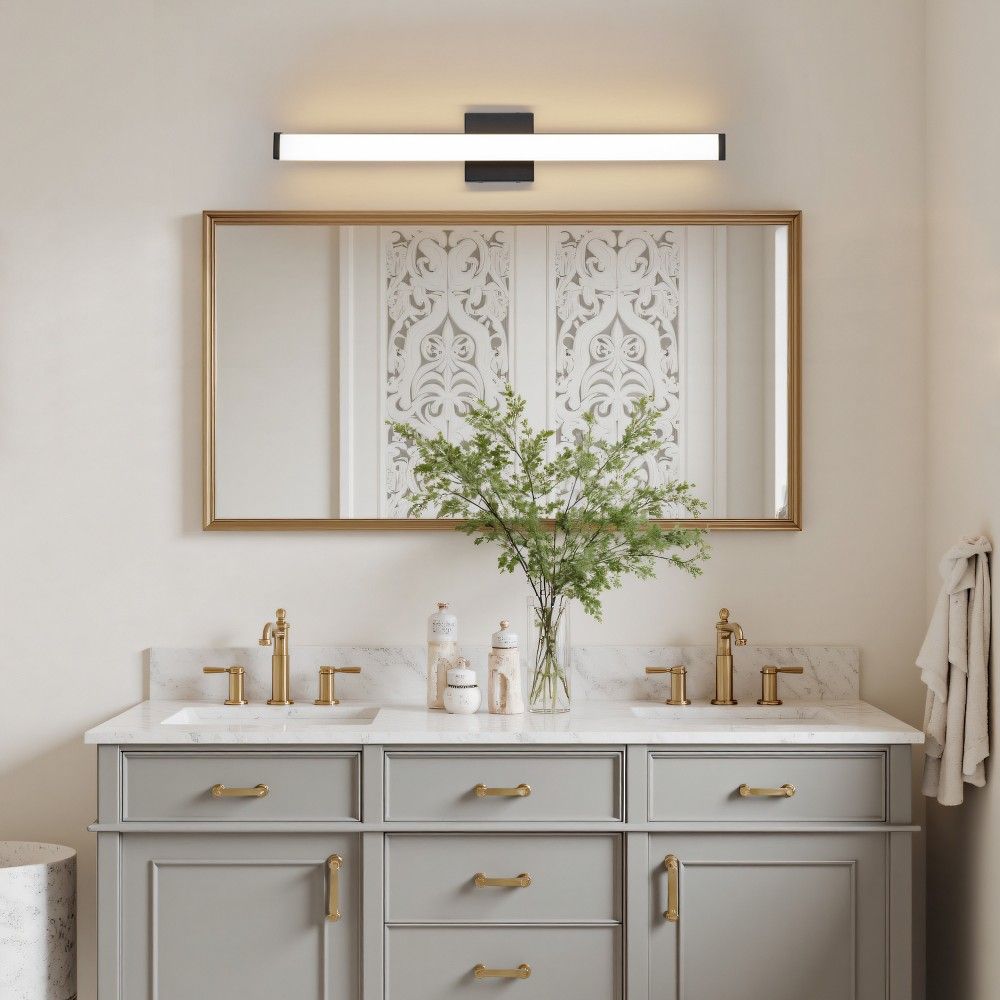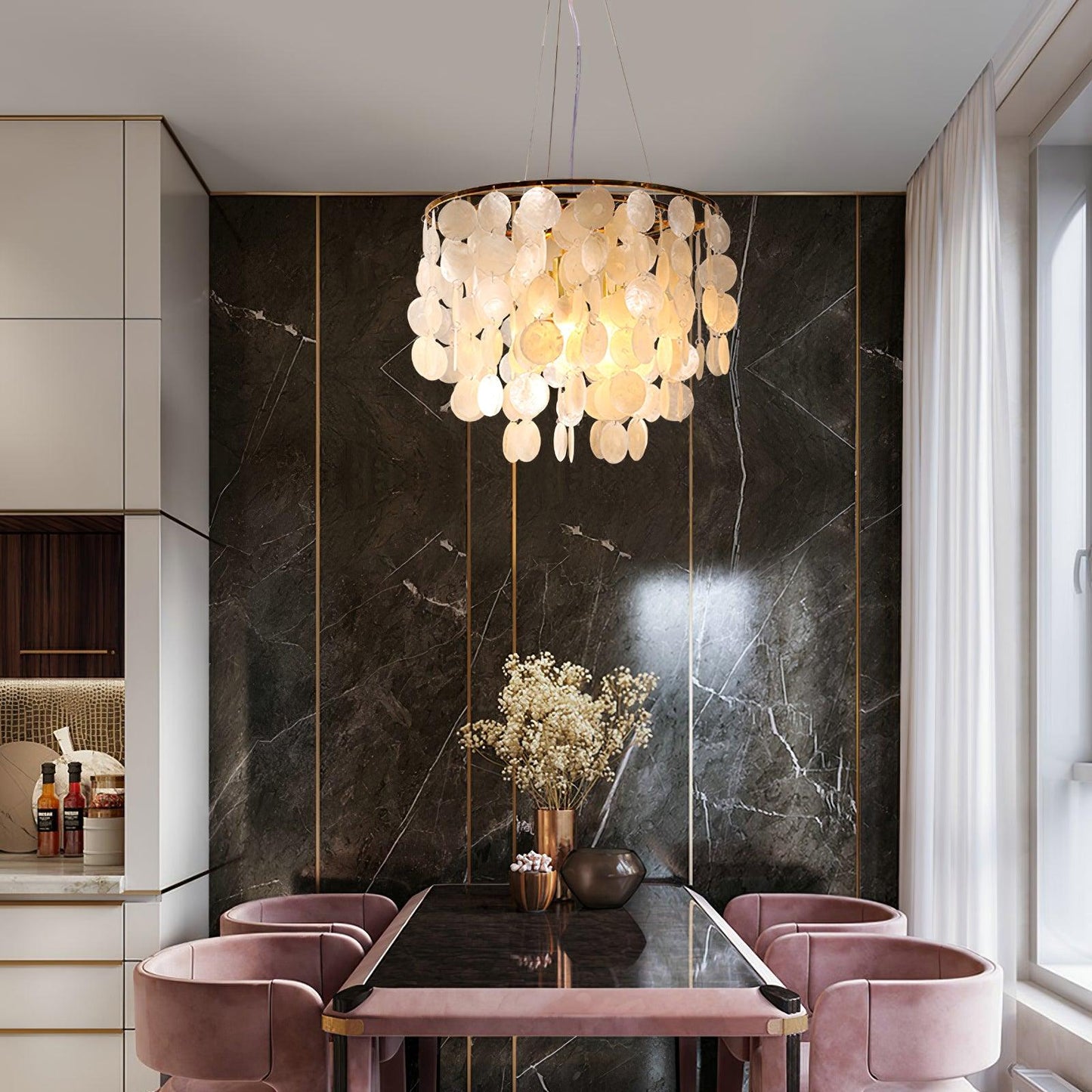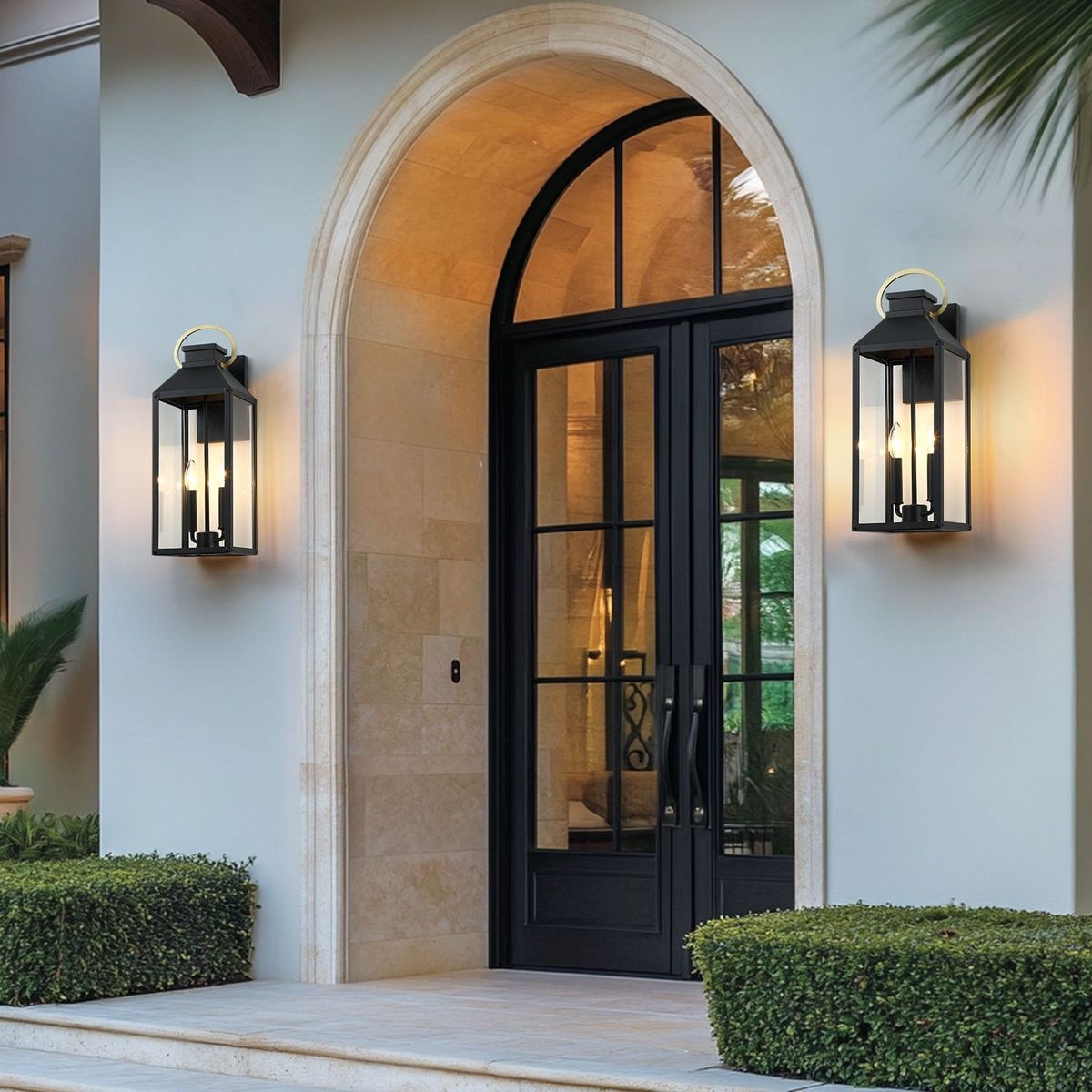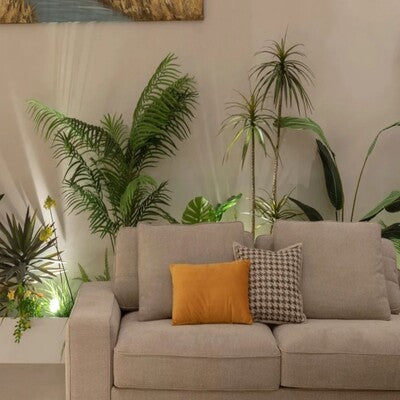
In 2025, home lighting will seamlessly blend nature and technology. Biophilic lighting, natural materials, soft tones, and smart integration will redefine spaces with comfort and innovation.
This article covers 12 key lighting trends that will shape interior design in 2025, offering a glimpse into innovations set to redefine how we light our homes.
Top Lighting Trends 2025
01 Biophilic Lighting: Nature-Inspired Shapes and Profiles
The biophilic design trend integrates organic elements such as plants, natural light patterns, and nature-inspired shapes (like branches and leaves) into lighting fixtures. The primary goal of biophilic lighting is to mimic the calming effects of the natural world, helping to promote well-being, reduce stress, and foster creativity in indoor spaces.

The philosophy behind this trend is simple: reconnect with nature. Flowing lines and shapes are timeless, and the biophilic design trend is thriving. Creative individuals are embracing this lighting trend, reinventing familiar elements from nature to create something unique. Nature is characterized by its imperfections and distinctive features, so the design must reflect that, giving each light fixture a unique personality.
The YIOSI ginkgo leaf chandelier embodies the beauty of nature through its delicate, leaf-inspired design. Each piece is artfully crafted to mimic the organic flow of ginkgo leaves. The soft, golden branches hold the leaves in place, diffusing light gently to create a warm, serene atmosphere. This chandelier is perfect for those who appreciate natural forms in design and want to bring a touch of tranquility and sophistication to their interiors.

02 Natural Raw Materials
In 2025, lighting design will embrace the beauty of imperfection by focusing on natural raw materials like tactile materials such as wicker and rattan. These elements bring an organic touch, adding warmth and texture to spaces. These materials, often left unrefined, allow the unique textures and grains of the raw material to stand out, bringing warmth and authenticity to interiors.

This shift isn't just about aesthetics. It reflects a broader desire to live more sustainably. As sustainability continues to shape design, lighting made from renewable, eco-friendly materials aligns with our growing environmental awareness. These raw materials foster a sense of grounding and connection to the outdoors, promoting well-being, reducing stress, and making even urban spaces feel closer to nature.
03 Soft Lighting
When it comes to modern interior design, soft lighting has shifted from a mere trend to a key element in shaping cultural preferences. Moving away from harsh overhead lights, soft lighting is designed to create an inviting, calming atmosphere, adding comfort and warmth to any space. This approach to lighting stems from the belief that lighting should enhance well-being without being intrusive.

Poul Henningsen, a pioneer in Scandinavian design, championed this philosophy, emphasizing the importance of practical, glare-free light. He believed that lighting should create a cozy, welcoming environment while remaining subtle and functional, a principle that still influences modern lighting design today.
04 Sculptural pieces
When selecting an interior design style, many customers often wonder, "What are the lighting trends for 2025?" Sculptural lighting is one of the most impactful trends that can instantly elevate the look of your space. If your room feels too traditional or lacking in excitement, sculptured lights can offer a fresh, modern touch that transforms any interior. This style not only adds sophistication but also serves as a stunning visual focal point, drawing attention and adding depth.

Sculptural lights are highly versatile and can be used in various settings such as restaurants, hotels, halls, and homes. Their striking designs bring a touch of art into any room, making them a perfect fit for spaces like living rooms, where they can be placed above a sofa to create the atmosphere of an art gallery. These out-of-the-box designs turn ordinary spaces into extraordinary ones, adding both charm and a modern edge.
05 Curved and Arch Design
Curved and Arch Lighting Design is gaining momentum in modern home design, emphasizing fluid, organic forms that bring a sense of elegance and movement to spaces. The design philosophy behind these curved lighting fixtures lies in their ability to soften a room's aesthetic, creating a seamless transition between architectural elements.

These designs, often inspired by nature and organic silhouettes, aim to evoke calm and harmony, making them ideal for both modern and classic interiors. This trend is becoming popular due to its visual appeal. Curved and arch designs contrast with the rigid lines typically found in modern architecture, offering a more inviting and approachable atmosphere.
06 Artistic Design Chandeliers
Artistic Design Chandeliers have evolved to become more than just lighting fixtures; they are now true works of art that serve as dramatic focal points in any room. In 2025, this trend is set to dominate luxury lighting.
One reason for the growing popularity of these chandeliers is the desire to personalize living spaces. As people move away from mass-produced items, they are increasingly seeking bespoke, one-of-a-kind lighting that reflects their style and adds a luxurious, artistic touch to their homes. Crafted with unique materials and creative forms, these pieces elevate spaces, serving both as lighting and art.
07 LED Panels With Motion Sensors
LED Panels with Motion Sensors are a popular choice in modern lighting design due to their combination of energy efficiency and convenience. These panels use integrated motion sensors to automatically turn lights on when movement is detected and off when the area is vacant.

As homes become smarter, these lights offer a solution that aligns with eco-friendly values while enhancing convenience and security. Their minimalistic design also makes them a great fit for modern, clutter-free interiors.
08 Minimalist and Invisible Light Sources
Minimalist and Invisible Light Sources are lighting designs that focus on enhancing the space without overpowering it. These concepts emphasize simplicity, clean lines, and discreet installations, allowing the architecture and design elements of a space to take center stage. The design philosophy is rooted in creating a clutter-free, open environment by minimizing visible fixtures. Recessed LED lights, hidden light sources, and sleek linear designs are commonly used, blending seamlessly into ceilings, walls, or floors to create an indirect, soft glow without revealing the light source itself.
This trend is gaining popularity due to its ability to offer functionality without detracting from the overall aesthetic of a space. It aligns with the broader minimalist movement, which favors simplicity and elegance over bold, bulky fixtures. The rise of smart lighting technology and advanced materials like OLED panels and fiber optics has made it possible to create these "invisible" lighting solutions, making them highly versatile and customizable for modern interiors.
Minimalist and invisible lighting appeals to those looking for a sleek, contemporary look, where the light enhances the space subtly rather than being a focal point itself. This trend continues to evolve as designers seek innovative ways to integrate light into architectural features seamlessly.
09 Technological marvels - smart lighting integration
As a lighting designer following the latest tech advancements, the belief is that 2025 will witness a significant transformation in home lighting through smart systems. These innovations will offer homeowners personalized control and automation capabilities previously unimaginable. For smartphone-savvy users, adjusting lighting will become as effortless as managing any other smart home device.

According to industry insights, many homes are expected to adopt app-controlled LED strips, sensor-triggered bulbs that activate upon entry, and voice-assistant integration for hands-free control. Additionally, motion tracking and geofencing will take automation to the next level. Imagine walking into a perfectly lit pathway every time you arrive home at night—lighting tailored to your location and preferences!
10 Vintage and Antique Lighting
Vintage and antique lighting is one of the major interior design trends in 2025, adding personality and a sense of history to modern spaces. It bridges past and present design trends. According to interior designer Nate Berkus, vintage lighting "brings beautiful character to a space, making it feel more unique and eclectic," blending both classic and contemporary elements.

Vintage and antique lighting is often a visual statement that enhances a room’s character while providing warm, ambient light. Hand-blown glass, bronze, and porcelain are common materials, often paired with intricate detailing and scrollwork. Toma Clark-Haines, the Antiques Diva, states, "Lighting is the jewelry of the room and sets the vibe of a space," highlighting the aesthetic power of antique lighting,
11 Graceful Quiet Luxury Lighting
In 2025, Quiet Luxury is expected to be a significant trend in interior and lighting design, blending refined elegance with a serene and understated approach. This concept has gained popularity among both homeowners and interior designers, focusing on subtle sophistication, premium materials, and the goal of crafting peaceful, welcoming environments.

In a world full of distractions, many homeowners seek environments that provide tranquility and sophistication. The "quiet luxury" aesthetic creates an exclusive yet comfortable atmosphere, and lighting plays a pivotal role in setting that mood.
In quiet luxury, every detail counts. High-quality fixtures with a minimalist design, warm color temperatures, and carefully placed lighting are key to creating a calming yet luxurious ambiance.
12 Mood and Atmosphere Lighting
Mood and atmosphere lighting is increasingly popular in 2025 home design because it offers the ability to transform a room’s ambiance instantly. People are seeking ways to enhance their well-being through lighting that improves relaxation, productivity, and emotional balance.

To design emotional lighting for home interiors, the goal is to create a lighting scheme that evokes specific emotions and moods, depending on the space's function. Warmer tones, such as yellows and oranges, are often associated with feelings of comfort and relaxation, making them ideal for bedrooms and living rooms. Cooler tones, such as blues, are more energizing and are better suited for workspaces or kitchens.
Nicola Harding, an interior designer, advocates for the use of varied lighting heights to create a dynamic, layered atmosphere that feels intimate and personalized.
Related reading:How to Choose the Perfect Chandelier for Your Dining Room?
Final thoughts
In 2025, lighting will go beyond mere function, becoming central to home design. It will set the mood, boost well-being, and make bold statements. With smart technology, energy efficiency, and new materials, these trends give homeowners endless ways to modernize and personalize their spaces.
At Yiosilamp Store, we specialize in elevating your home’s ambiance with our curated selection of chandeliers, pendant lights, floor lamps, and table lamps. Welcome to our store—explore a wide range of stylish and functional lighting options.

